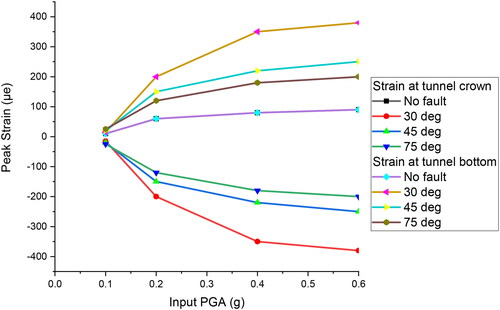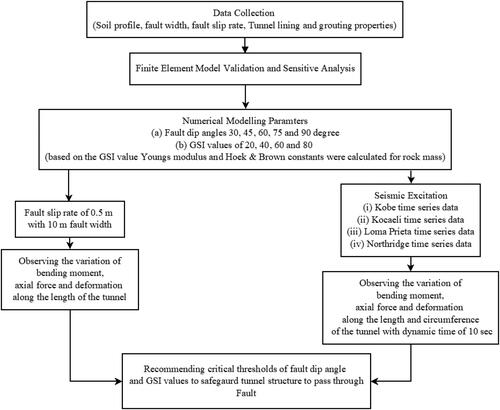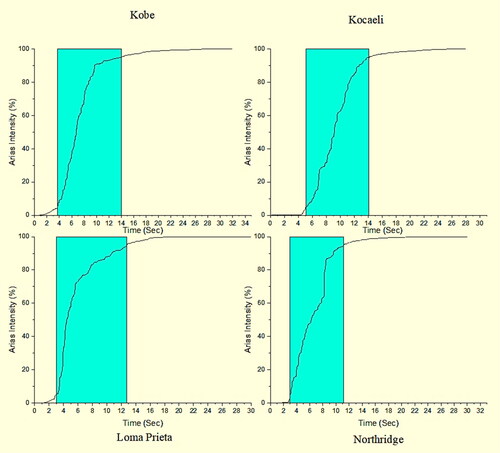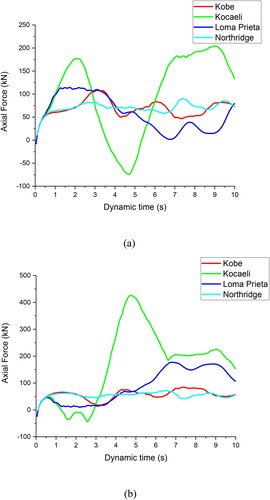Figures & data
Table 1. Properties of materials.
Figure 3. Numerical model for (a) 30° dip angle, (b) 90° dip angle, and (c) 2D representation of fault movement.
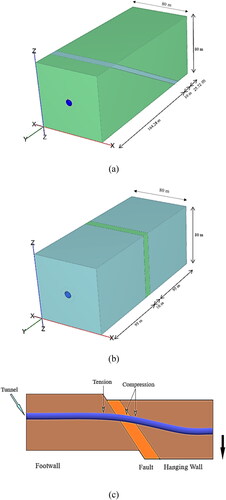
Table 2. Hoek-Brown parameters.
Figure 4. (a) Time history graphs of selected ground motions and (b) displacement Vs time graph for selected ground motions up to 20 sec.

Table 3. Ground motion details.
Figure 6. Bending moment variation along the length of the tunnel for (a) 30° dip, (b) 60° dip, and (c) 90° dip at tunnel crown.
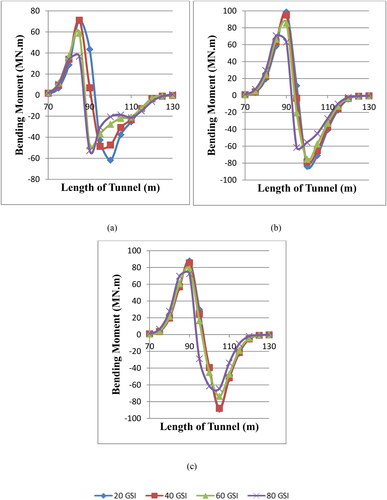
Figure 7. Bending moment variation along the length of the tunnel for (a) 20 GSI and (b) 80 GSI at tunnel crown.
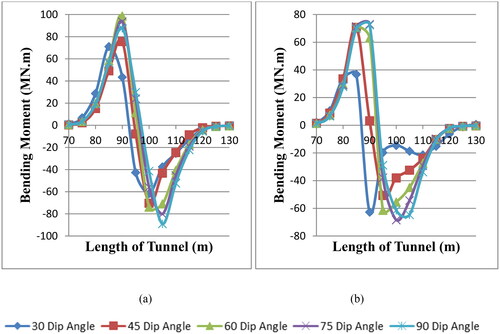
Figure 8. Axial force variation along the length of the tunnel for (a) 30° dip, (b) 60° dip, and (c) 90° dip at tunnel crown.
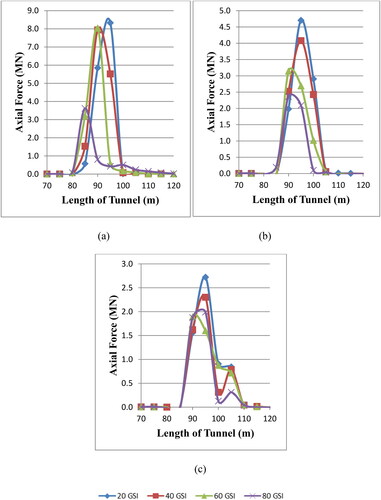
Figure 9. Axial force variation along the length of the tunnel for (a) 20 GSI and (b) 80 GSI at tunnel crown.
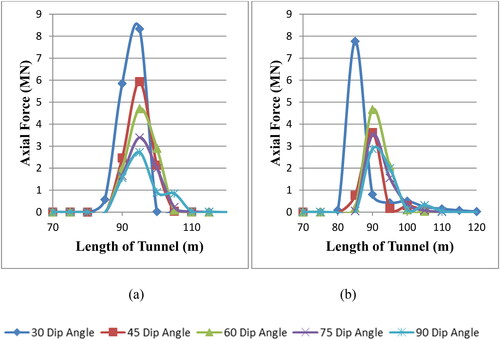
Figure 11. Bending moment variation along the tunnel circumference for (a) 20 GSI and (b) 80 GSI at 95 m from tunnel portal.
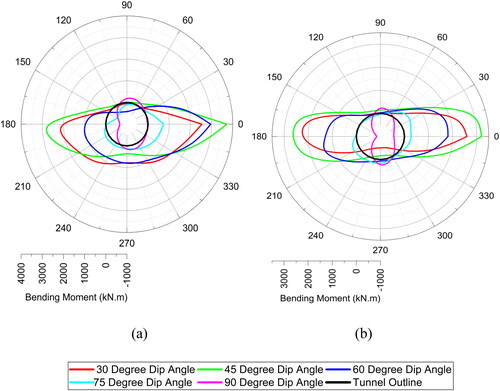
Figure 12. Bending moment variation along the tunnel circumference for (a) 20 GSI and (b) 80 GSI at 105 m from tunnel portal.
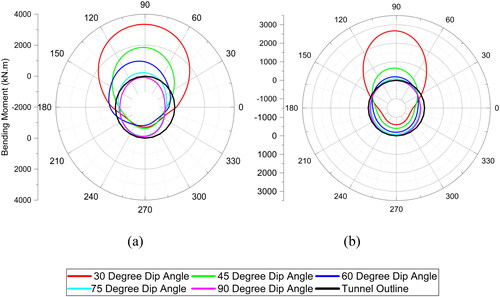
Data availability statement
The authors confirm that the data supporting the findings of this study are available within the article.

